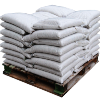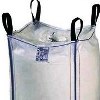| Aadhunik Industries is a manufacturing group company. Aadhunik Industries is pioneer manufacturers of Specialty Chemicals, Pharmaceutical Excipients, Food Fragrance & Flavor chemicals in India. It has toll manufacturers and representatives in UAE, Europe, Canada & USA and agents & customers in all countries like USA, Canada, Europe, UAE Dubai, South Africa, Tanzania, Kenya, Egypt, Nigeria, Uganda, Turkey, Mexico, Brazil, Chile, Argentina, Malaysia, Indonesia, Thailand, Korea, Japan, etc. Halal & Kosher certified Manganese Chloride Manufacturers made in a FDA-GMP plant is offered. |
| The units have one or more of the certifications like FDA GMP, ISO 9001, ISO 22000, HACCP, REACH, Kosher & Halal and DMF support is available. |





Manganese Chloride SDS of Manufacturers
Properties and Specifications of Manganese Chloride USP FCC Food Grade Manufacturers
Manganese Chloride SDS, Safety Data Sheet
MSDS Sheet, Material Safety Data Sheet
Section 1: Chemical Product and Company Identification
Product Name & Other Names: Manganese Chloride Tetrahydrate
CAS#: 13446-34-9
EINECS EC Number: 231-869-6
TSCA: TSCA 8(b) inventory: Manganese chloride tetrahydrate
Molecular Formula: MnCl2-4H2O
Molecular Weight: 197.92
Relevant uses and uses advised against (if any): Industrial Manufacturing.
Section 2: Hazards Identification
GHS, Globally Harmonized System Classification in accordance with 29 CFR 1910
Hazard Class and Category Code(s), Regulation (EC) No 1272/2008 (CLP)
Acute toxicity, oral Category 4
Hazardous to the aquatic environment, acute hazard Category 3
Labeling Regulation EC 1272/2008 (CLP) & GHS
GHS Label Elements  Irritant |
Signal Words: Warning
Hazard statements:
H302: Harmful if swallowed.
H402: Harmful to aquatic life.
Precautionary statements:
P264: Wash skin thoroughly after handling.
P270: Do not eat, drink or smoke when using this product.
P273: Avoid release to the environment.
P330: Rinse mouth.
P301+P312: IF SWALLOWED: Call a POISON CENTER or doctor/ physician if you feel unwell.P280 - Wear protective gloves/protective clothing/eye protection/face protection.
P302+P352: IF ON SKIN: Wash with plenty of soap and water.
P304+P340: IF INHALED: Remove victim to fresh air and keep at rest in a position comfortable for breathing.
P305+P351+P338: IF IN EYES: Rinse cautiously with water for several minutes. Remove contact lenses, if present and easy to do. Continue rinsing.
P501: Dispose of contents/ container to an approved waste disposal plant.
Classification according to EU Directives 67/548/EEC or 1999/45/EC:
Hazard Symbol:
Xn Harmful
Risk Phrases:
R22 = Harmful if swallowed.
R52 = Harmful to aquatic organisms.
Section 3: Composition and Information on Ingredients
Product Name & Other Names: Manganese Chloride Tetrahydrate
CAS #: 13446-34-9
EINECS EC Number: 231-869-6
Section 4: First Aid Measures
Always seek medical attention after first aid measures are provided.
Eye Contact: Check for and remove any contact lenses. Immediately flush eyes with running water for at least 15 minutes, keeping eyelids open. Cold water may be used. Do not use an eye ointment. Seek medical attention.
Skin Contact: After contact with skin, wash immediately with plenty of water. Gently and thoroughly wash the contaminated skin with running water and non-abrasive soap. Be particularly careful to clean folds, crevices, creases, and groin. Cold water may be used. Cover the irritated skin with an emollient. If irritation persists, seek medical attention.
Serious Skin Contact: Wash with a disinfectant soap and cover the contaminated skin with an anti-bacterial cream. Seek immediate medical attention.
Inhalation: Allow the victim to rest in a well-ventilated area. Seek immediate medical attention.
Ingestion: Do not induce vomiting. Examine the lips and mouth to ascertain whether the tissues are damaged, a possible indication that the toxic material was ingested; the absence of such signs, however, is not conclusive. Loosen tight clothing such as a collar, tie, belt, or waistband. If the victim is not breathing, perform mouth-to-mouth resuscitation. Seek immediate medical attention.
Section 5: Fire and Explosion Data
Flammability of the Product: Non-flammable.
Explosion Hazards in Presence of Various Substances:
Risks of explosion of the product in presence of mechanical impact: Not available.
Risks of explosion of the product in presence of static discharge: Not available.
Section 6: Accidental Release Measures
Personal precautions, protective equipment, and emergency procedures: Avoid breathing dust/fumes/gas/mist/vapors/spray. Use individual protective equipment (waterproof boots, suitable protective clothing, safety glasses, etc.). Restrict unprotected personnel from the area. Prevent any contact with hot surfaces. Do not approach facing the wind. Do not touch the spilled material.
Environmental precautions: Do not let the product enter drains, soil, or water sources.
Methods and materials used for containment Cleanup procedures and Storage:
Small Spill: Use appropriate tools to put the spilled solid in a convenient waste disposal container. Finish cleaning by spreading water on the contaminated surface and dispose of according to local and regional authority requirements.
Large Spill: Contain spilled material. Do not let the product enter drains. Use a shovel to put the material into a convenient waste disposal container. Finish cleaning by spreading water on the contaminated surface and allow evacuating as per law.
Section 7: Handling and Storage
Precautions for safe handling: Apply according to good manufacturing and industrial hygiene practices. Ensure proper ventilation. In case of insufficient ventilation, wear suitable respiratory equipment. Wash thoroughly after handling. Do not drink, eat, or smoke while handling. Avoid contact with skin, eyes, and clothing. Minimize dust generation. Avoid breathing dust/fumes/gas/mist/vapors/spray. Avoid contact with eyes, skin, and clothing. Keep container tightly closed. Avoid ingestion and inhalation. Use individual protective equipment (waterproof boots, suitable protective clothing, safety glasses, etc.). Prevent any contact with hot surfaces.
Conditions for safe storage, including any incompatibilities: Store in cool, dry, and ventilated area away from heat sources and protected from sunlight in tightly closed original container. Keep air contact to a minimum. Store protected from heat, sparks and ignition sources and incompatible materials. Avoid contact with skin and eyes. Avoid inhalation of dust/mist/vapor. Do not store with incompatible materials like strong oxidizing agents.
Section 8: Exposure Controls/Personal Protection
Exposure Limits: TWA: 1 STEL: 3 (mg/m3) from ACGIH USA.
Engineering Controls: Use process enclosures, local exhaust ventilation, or other engineering controls to keep airborne levels below recommended exposure limits. If user operations generate dust, fume, or mist, use ventilation to keep exposure to airborne contaminants below the exposure limit.
Ventilation System: A system of local and/or general exhaust is recommended to keep employee exposures as low as possible. Local exhaust ventilation is generally preferred because it can control the emissions of the contaminant at its source, preventing dispersion of it into the general work area.
Personal Respirators (NIOSH Approved): For conditions of use where exposure to dust or mist is apparent and engineering controls are not feasible, a particulate respirator may be worn. For emergencies or instances where the exposure levels are not known, use a full-face positive-pressure, air-supplied respirator.
Skin Protection: Wear protective gloves and clean body-covering clothing.
Eye Protection: Use chemical safety goggles and/or full face shield where dusting or splashing of solutions is possible. Maintain eye wash fountain and quick-drench facilities in work area.
Section 9: Physical and Chemical Properties
Appearance: Pink-red solid crystals or powder.
Odor: none reported.
Odor threshold: Not available.
pH: 5.5
Relative density: around 2.98
Boiling Point: 1190 deg C; 2174 deg F.
Melting Point: 58 deg C.
Flash point: Not available.
Auto-ignition temperature: Not available.
Decomposition Temperature: > 100 deg C
Upper/lower flammability or explosive limits: Not available.
Vapor pressure: Not available.
Vapor density: Not available.
Evaporation rate: Not available.
Flammability (solid, gas): Not available.
Partition coefficient: n-octanol/water: Not available.
Solubility(ies): Soluble in water.
Viscosity: Not available.
Section 10: Stability and Reactivity Data
Stability: Stable.
Instability Temperature: Not available.
Conditions of Instability: Not available.
Incompatibility with various substances: Not available.
Polymerization: No.
Section 11: Toxicological Information
Toxicity to Animals: Acute oral toxicity (LD50): 1454 mg/kg [Rat].
Carcinogenicity: No component of this product present at levels greater than or equal to 0.1% is identified as possible or confirmed human carcinogen by IARC, ACGIH, OSHA and NTP.
Teratogenic Effects: Not available.
Mutagenic Effects: Not available.
Developmental Toxicity: Not available.
Reproductive Effects: No information available.
Section 12: Ecological Information
Toxicity to fish: LC50 - Carassius auratus (goldfish) - 18,8 mg/l - 7 d
Toxicity to daphnia and other aquatic invertebrates: EC50 - Daphnia magna (Water flea) - > 11 mg/l - 48 h
Results of PBT and vPvB assessment: This substance/mixture contains no components considered to be either persistent, bioaccumulative and toxic (PBT), or very persistent and very bioaccumulative (vPvB) at levels of 0.1% or higher.
Section 13: Disposal Considerations
Waste Disposal: To be done as per legal requirement.
Section 14: Transport Information
DOT USA, TDG Canada & ADR/RID: Not regulated.
IMDG/IMO: Not regulated.
IATA/ICAO: Not regulated.
Section 15: Other Regulatory Information
USA Regulations:
OSHA: Hazardous by definition of Hazard Communication Standard (29 CFR 1910.1200).
Section 16: Other Information
European Labeling in Accordance with EC Directives:
H302 = Harmful if swallowed.
H402 = Harmful to aquatic life.
DISCLAIMER: The information and recommendations set forth herein (hereinafter "Information") are presented in good faith and believed correct as of the date hereof. It is compiled from various sources and it is not necessarily all inclusive nor fully adequate in every circumstance. In addition, these suggestions should not be confused with nor followed in violation of applicable laws, regulations, rules or insurance requirements applicable.This Manganese Chloride SDS sheet is intended only as a guide to the appropriate precautionary handling of the material by a properly trained person using this product. Individuals receiving the information must exercise their independent judgment in determining its appropriateness for a particular purpose.
Manganese Chloride USP FCC Food Grade Manufacturers
Aadhunik Industries
Ankleshwar Gujarat &, Mumbai, India
TEL: (OFFICE) 91-22-23774610, 23723564.
e-mail: info@aadhunikindustries.com

Exports to USA, Canada, UAE, Dubai, South Africa, Tanzania, Kenya, Nigeria, Egypt, Uganda, Turkey, Mexico, Brazil, Chile, Argentina, Europe Netherlands, Italy, Spain, Germany, Portugal, France, Malaysia, Indonesia, Thailand, Korea, Vietnam, Japan, etc.
Copyright and Usual Disclaimer is Applicable